标签:自定义 http 执行 empty 相互 nta 应用 链式 ffffff
在力扣题库中有一道经典的栈表应用问题:有效的括号
给定一个只包括 ‘(‘,‘)‘,‘{‘,‘}‘,‘[‘,‘]‘ 的字符串,判断字符串是否有效。
有效字符串需满足:
1、 左括号必须用相同类型的右括号闭合。
2、左括号必须以正确的顺序闭合。
3、注意空字符串可被认为是有效字符串。
来源:力扣(LeetCode)
链接:https://leetcode-cn.com/problems/valid-parentheses
| 示例1 | 示例 2 | 示例 3 | 示例 4 | 示例 5 |
|---|---|---|---|---|
| 输入: "()" | 输入: "()[]{}" | 输入: "(]" | 输入: "([)]" | 输入: "{[]}" |
| 输出: true | 输出: true | 输出: false | 输出: false | 输出: true |

由于输入的字符串长度不定,并考虑自定义一个链式栈(无栈满问题,空间可扩充)进行编码实现。
每个元素,除了存储其本身的信息(数据域)之外,还需存储一个指示其直接后继存放位置的指针。这两部分信息组成数据元素的存储映像,称为结点(Node)。
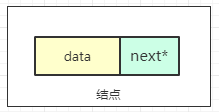
/**
* 结点类
*
* @author zhuhuix
* @date 2020-05-29
*/
public class Node<T> {
// 数据域
private T data;
// 指针
private Node<T> next;
Node(T t, Node<T> n) {
this.data = t;
this.next = n;
}
public T getData() {
return data;
}
public Node<T> getNext() {
return next;
}
public void setNext(Node<T> next) {
this.next = next;
}
}

/**
* 链栈的实现
*
* @author zhuhuix
* @date 2020-05-29
*/
public class LinkStack<T> {
// 栈顶元素
private Node<T> top;
// 栈的长度
private Integer length;
// 构造方法
public LinkStack() {
this.top = null;
this.length = 0;
}
// 入栈push
public void push(T t) {
this.top = new Node<>(t, this.top);
this.length++;
}
// 出栈pop
public T pop() {
if (this.top == null) {
return null;
}
T data = this.top.getData();
this.top = this.top.getNext();
this.length--;
return data;
}
// 查看栈顶元素
public T peek() {
if (this.top == null) {
return null;
}
T data = this.top.getData();
return data;
}
// 栈是否为空
public boolean isEmpty(){
return this.length==0;
}
// 销毁栈
public void destroy() {
this.top =null;
this.length = 0;
}
public Integer getLength() {
return this.length;
}
}
/**
* ==用链式栈解决力扣括号匹配问题==
* <p>
* 给定一个只包括 ‘(‘,‘)‘,‘{‘,‘}‘,‘[‘,‘]‘ 的字符串,判断字符串是否有效。
* 有效字符串需满足:
* 左括号必须用相同类型的右括号闭合。
* 左括号必须以正确的顺序闭合。
* 注意空字符串可被认为是有效字符串。
* <p>
* 来源:力扣(LeetCode)
* 链接:https://leetcode-cn.com/problems/valid-parentheses
*
* @author zhuhuix
* @date 2020-05-30
*/
public class LinkStackTest {
public static void main(String[] args) throws IOException {
BufferedReader bufferedReader = new BufferedReader(new InputStreamReader(System.in));
System.out.println("请输入只包括 ‘(‘,‘)‘,‘{‘,‘}‘,‘[‘,‘]‘ 的字符串");
String s = bufferedReader.readLine();
if (isValid(s)) {
System.out.println("字符串的括号相互匹配,有效");
} else {
System.out.println("字符串的括号不匹配,无效");
}
}
/**
* 通过左括号入栈,右括号出栈的算法判断括号是否匹配
*
* @param s 待判断的字符串
* @return 不匹配返回false, 匹配返回true
*/
public static boolean isValid(String s) {
LinkStack<String> stack = new LinkStack<>();
for (int i = 0; i < s.length(); i++) {
String ch = s.substring(i, i + 1);
switch (ch) {
// 左括号入栈
case "(":
case "[":
case "{":
stack.push(ch);
break;
case ")":
if (stack.isEmpty()) {
return false;
}
// 如果栈顶为左小括号,则匹配出栈
if ("(".equals(stack.peek())) {
stack.pop();
} else {
return false;
}
break;
case "]":
if (stack.isEmpty()) {
return false;
}
// 如果栈顶为左中括号,则匹配出栈
if ("[".equals(stack.peek())) {
stack.pop();
} else {
return false;
}
break;
case "}":
if (stack.isEmpty()) {
return false;
}
// 如果栈顶为左大括号,则匹配出栈
if ("{".equals(stack.peek())) {
stack.pop();
} else {
return false;
}
break;
default:
return false;
}
}
return stack.isEmpty();
}
}
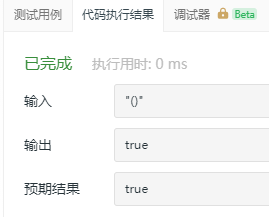
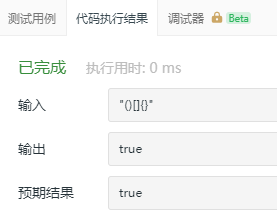
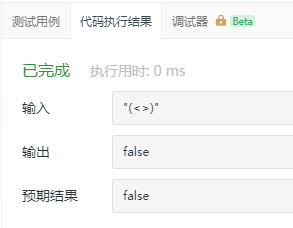
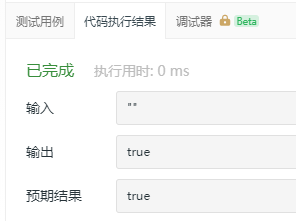
标签:自定义 http 执行 empty 相互 nta 应用 链式 ffffff
原文地址:https://www.cnblogs.com/zhuhuix/p/12991493.html